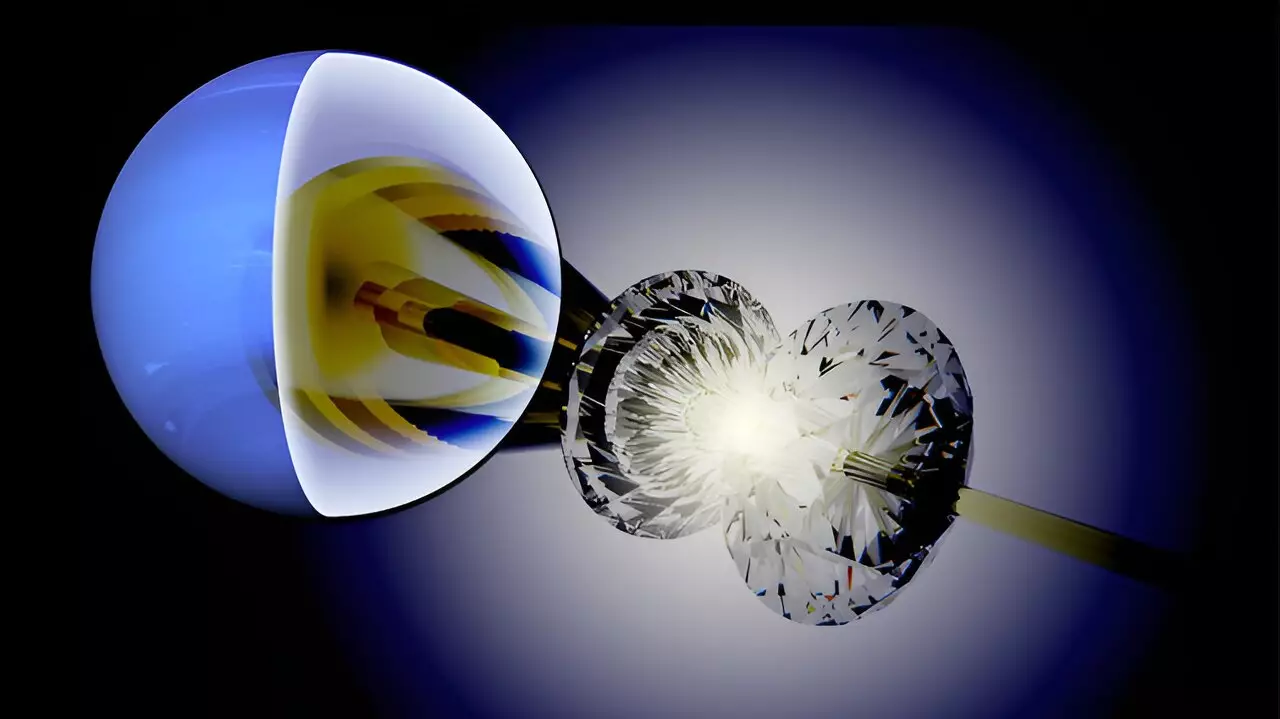In a recent study published in the Journal of Applied Physics, a team of researchers from Lawrence Livermore National Laboratory (LLNL), Argonne National Laboratory, and Deutsches Elektronen-Synchrotron have made significant progress in improving the reliability of equation of state measurements in a pressure regime not previously achievable using the diamond anvil cell. This new sample configuration allows for high-quality static equation-of-state measurements above 5 million atmospheres, reaching conditions similar to that of Neptune’s interior.
The development of the toroidal diamond anvil cell by LLNL has been instrumental in pushing the static pressure limit in condensed-matter sciences. However, the next crucial step was advancing the sample fabrication to enable more complex experiments. Static compression experiments to pressures higher than 300 GPa are exceedingly challenging, with the compression environment often not being ideal. The new sample package developed by the research team addresses this issue by providing an improved compression environment, resulting in higher-quality equation of state data.
In order to enable experiments at multi-megabar conditions, the team microfabricated a sample package in a 10-step process. The target material is embedded in a uniform capsule of soft metal, which serves as a pressure-transmitting medium. This innovative approach ensures that stress is uniformly distributed around the sample material, crucial for obtaining reliable equation-of-state measurements. The small sample chamber in the toroidal diamond anvil cell, which is on the order of 20 times smaller than the width of a human hair, allows for precise control and manipulation of the sample.
The experiments were conducted at Argonne National Laboratory Sector 16 HPCAT and at Deutsches Elektronen-Synchrotron PETRA-III. While the researchers tested the methodology on molybdenum with a copper pressure-transmitting medium, the sample package can be broadly applied across different materials. The simplicity and effectiveness of this sample-encapsulation method have the potential to significantly advance static equation of state calibrations in physics, chemistry, and planetary science.
According to LLNL scientist Claire Zurkowski, the development of this sample package is just the beginning of sample-package microfabrication in the toroidal diamond anvil cell. It is expected that this innovative approach will push static equation of state calibrations into the multi-megabar range, where data is currently limited. This advancement opens up new possibilities for conducting experiments at extreme pressures, providing valuable insights into the behavior of materials under such conditions.
Overall, the research conducted by the international team of scientists represents a significant milestone in the field of static compression experiments. By overcoming previous limitations in sample fabrication and compression environments, the researchers have laid the groundwork for more accurate and reliable equation of state measurements at unprecedented pressure levels. This work not only expands our understanding of the behavior of materials under extreme conditions but also paves the way for future advancements in high-pressure research.


Leave a Reply